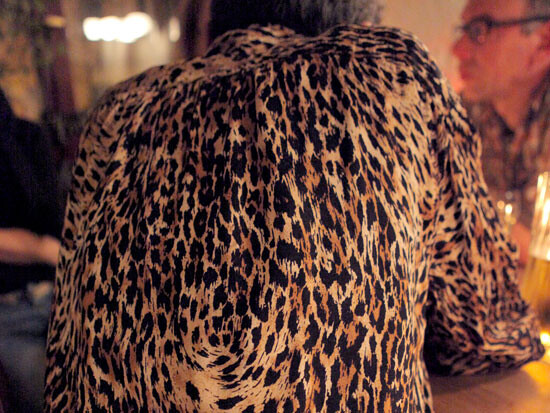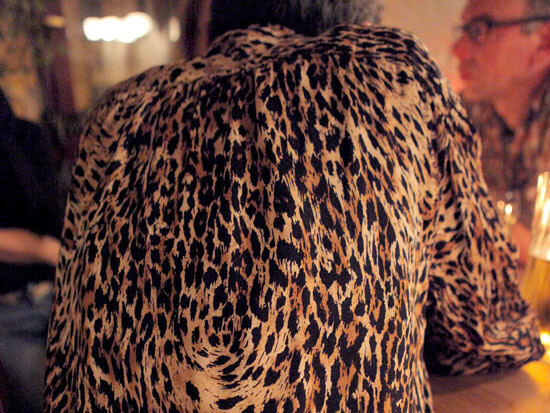

Interface (Schnittstelle, 1995), which I saw for the first time in 2002, was an incision, a visceral slash to my senses, with deep consequences for my life and work.1 This cut marks the encounter with Harun’s work that channeled my access to something that was previously immanent but unpronounced: a material and a magical dimension of the process of film montage: “Workers paving a road with cobbles will throw a stone into the air and catch it; each stone is different, and they determine where it properly belongs in midflight.”2
In one early conversation with Harun, I commented on my troubles with language and the misunderstandings imbedded in the practice of translation. I described how I had once incorrectly used the German world “Artikulation” to describe a pain in my elbow:“meine Artikulation tut weh.” My German-speaking interlocutor was confused since the word “Artikulation” in German is used to describe a thought put into words, but never a joint between two bones (as for example in Portuguese and English). In the German sense, I was saying: “my utterance is hurting.” Then Harun told me how he was interested in the deviations of meaning and the polysemic nature of words. He said that if he were to choose another occupation, he would be an etymologist.
Floating meanings have nothing to do with imprecision, but rather with the precise possibilities of language, and Harun was a passionate expert in detecting, inventorying, and describing what can be seen, and what this can mean. Sometimes Harun would wear a leopard shirt, which I started to link with the multiple meanings that the monosyllabic Yahoos of Borges’s Brodie’s Report associated with the word “nrz”: “a starry sky, a leopard, a flock of birds, smallpox, something bespattered, the act of scattering, or the flight that follows defeat in warfare.”3 Well, war was always in the background of Harun Farocki’s cinematic essays; by connecting certain dots, an observation of a simple daily gesture could be conditioned by that of pulling a trigger. Just as the hand of a worker building a road could turn into a revolted hand throwing a stone.
As much as Harun was pointing to the convergence of living conditions and the macro-industries in charge of putting an end to lives, he was, simultaneously, interested in the beginning of life itself. Harun had a genuine curiosity for children, how they begin to articulate themselves and describe what they see. Regarding the notion that Workers Leaving the Factory (Arbeiter verlassen die Fabrik, 1995) exemplifies the first cinema genre ever—a genre transversal throughout film history—Harun said: “As if the first word that a child just learned to speak was repeated over a hundred years, so as to eternalize the joy the child felt upon the very first experience of speaking.”4 Harun maintained that joy in experiencing the beginning of language anew over and over again, unfolding or dilating meanings. Throughout his life he recurrently worked for child audiences and with young people on different continents.5
I frequently briefed Harun about my daughter’s first stories, poems, and comments. Oddly enough, the last time I did this, my eight-year-old’s observation concerned war, articulation, seeing, and Harun’s films. I had been talking with her about the war in Gaza and about a terrifying Israeli attack that had occurred that day, when she interrupted me to say, “Yes, and Harun made those films about soldiers training themselves with computer games for such an attack, and in those games there are shadows. Later, when they come back, they use other computer games to heal themselves from the war. But these games have no shadows because the money from the shadows is used for the healing of the soldiers.”
“How to see” and “as you see” have different meanings, but both are embedded in the title of Harun’s film Wie man sieht. Godard—or better yet, the brilliant analyst of Godard’s work, Georges Didi-Huberman—would bring a similar thought to the homophony of “vois la” (see here) and “voilà!” (here it is). Wie man sieht includes both the educative and rhetorical question of “how to see,” and the authoritarian statement “as you see.” Harun’s laboratories are located within this space between a question and a statement. Wie man sieht addresses the fact that ways of seeing get actualized in phenomenal connections and possibilities created when image and speech overlap. Harun’s ways of seeing were informed by a particular ethics and political interest in the conditions of production and the economic constructions inherent to an image. I wish that History was taught As You See.
A shadow omitted from the therapeutic computer games of soldiers is probably not what the film series Serious Games is about. Yet there is something to this: a kind of a space of dispersion or uncertainty inherent to that film language, which created the possibility of an oblique reading, of seeing something that wasn’t necessarily inscribed into it—a reading that eventually produced a right meaning, emerging beyond the image’s intentionality.
Harun Farocki’s sudden disappearance is a painful fissure, another Schnittstelle that creates a space between two incisions—an encounter and a loss. This gap is not a void, but the possibility of a joint. For those who lived his work and/or shared his life, the question is: What to join, and how to join it? A Farockian approach to this would be to engage in the ritual of recalling, the magical Transmission of those absent, the effort to connect by making material the emanating influence of the work he most admired.
Harun quoted and appropriated thoughtfully. On the subject of the renunciation of authorship, he once said: “He who finds knows how to judge and is therefore the true author.”6 Harun would pay tribute to others, through precise gestures of quoting that resulted in great conceptual pieces of work: To introduce Peter Weiss in Zur Ansicht: Peter Weiss (1979), Harun enrolls himself as a film curator presenting his films. Seated at a table he reads a text about Weiss’s work and life. The dispositive deviates from that of a newscaster in front of a TV camera: Harun offers a side view to frame his statement, making measurable the space between his hands holding a paper and his mouth articulating speech. In this expanse, a candle is the only source of light on the set. Harun’s words displace the air acting on the flame, illuminating the scene. One could also say that all of Harun’s works about labor are ongoing answers to Brecht’s never-ending Questions From a Worker who Reads7. For instance, to express his interest in Vilém Flusser’s polyglottic thinking, Harun invites Flusser to read an image: the cover page of that day’s issue of the German newspaper Bild (a title which translates as “image” in English)8; The repetition of the sentence “I cannot find the photography”9 resulted from the montage of a documentation of the countless retakes of a scene in Straub and Huillet’s adaptation of Kafka’s Amerika. The sentence becomes a mantra or a parable for Harun’s search for the photography of his own film.10
How to recall Harun’s work? An appropriate Farockian gesture that I witnessed recently was Antje Ehmann’s exhaustive inventory of the items on Harun’s worktable that I read as eloquently mournful concrete poetry. How to transfer his gestures, ethics, humanism? How to operate the instruments he had at hand? How to expand the problems that Farocki made visible, and are present throughout our lives and work? On the night of July 30, 2014, someone shouted, “We want more Harun!,” as if a protest march was about to break out in the streets of Berlin.
I remember that sometimes Harun stood by himself, with an elegant but busy pose, hands on hips, as if just taking a short pause before going on with his work. Once, standing like that, I shared with him my daughter’s loose, but slightly Brechtian comment while looking up at the cloudy sky: “Long time will pass, till I see this cloud again.”11
Videozone I. International Video Art Biennial in Israel, Tel Aviv, 2002.
Harun Farocki, “What an Editing Room Is,” in Imprint: Writings / Nachdruck: Texte,eds. Susanne Gaensheimer and Nicolaus Schafhausen(New York: Lukas & Sternberg; Berlin: Vorwerk 8, 2001). German original: “Straßenarbeiter, wenn sie Kopfsteine verlegen, werfen einen Stein hoch und fangen ihn auf, jeder Stein ist anders, und wohin er gehört, das erfassen sie im Fluge.”
Jorge Luis Borges, in Collected Fictions (New York: Penguin Books, 1998).
German original: “Als würde ein Kind das erste Wort, das es sprechen gelernt hat, über hundert Jahre wiederholen, um die Freunde am ersten Sprechen zu verewigen.” From Harun Farocki, Filme (Berlin: Absolut Medien, 2009). English translation by the author.
See both Labor in a Single Shot in collaboration with Antje Ehmann, 2011–2014; and Wie die Dinge entstehen, a children’s film program co-curated with Stefanie Schlüter at Documentary Forum 3, Berlin, 2014.
Harun Farocki and Hito Steyerl, A Magical Imitation of Reality (Milan: Kaleidoscope Press 2011).
See →.
Farocki, Schlagworte—Schlagbilder (1986).
In the German original: “Ich kann die Photographie nicht finden.”
Farocki, Jean-Marie Straub und Danièle Huillet bei der Arbeit an einem Film nach Franz Kafkas Romanfragment “Amerika” (1983).
Brecht, Bertolt Erinnerung an die Marie A. (Memory of Marie A.), 1920 ” … Und über uns im schönen Sommerhimmel | War eine Wolke, die ich lange sah | Sie war sehr weiß und ungeheuer oben | Und als ich aufsah, war sie nimmer da. …” ” … And above us in the beautiful summer sky | Was a cloud which I watched for a long time. | It was very white and tremendously high | And as I looked upwards, it was there no more. … “
